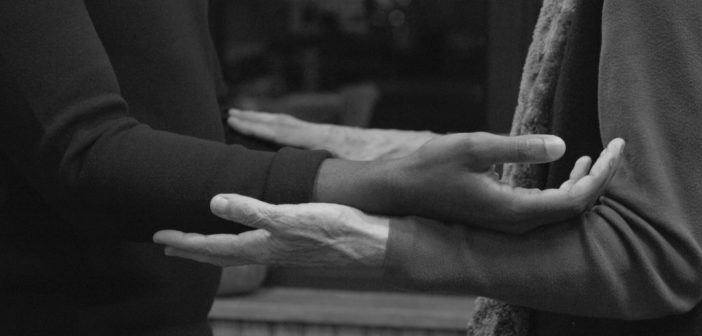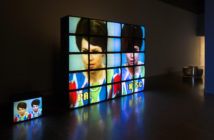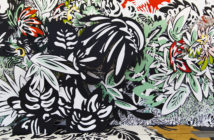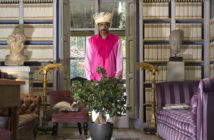Adam Pendleton’s forearms resting on Yvonne Rainer’s hands is a hopeful image. Not kumbaya, we’re all brothers and sisters no matter our race, gender, sexuality, or age kind of superficial hopeful. Instead, it’s a hopefulness born out of the possibility for exchange, of taking the time to learn something from one another face-to-face and to bear each other’s weight.
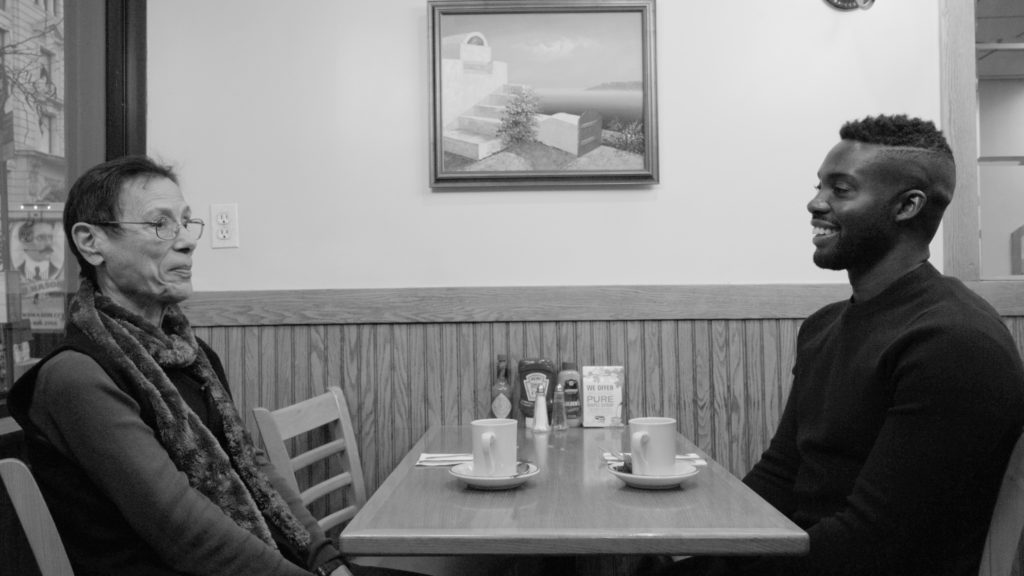
Adam Pendleton, Just Back from Los Angeles: A Portrait of Yvonne Rainer, 2016–17.
Single-channel black-and-white video with sound, 13:51 min.
Dimensions variable. Courtesy the artist.
To film this video portrait, Pendleton met Rainer at her favorite New York City diner, which she calls her “office” away from home. Pendleton boils down the three-hour meeting to thirteen minutes of disconnected moments that mix the mundane -- cars passing by in front of the diner and the placing of dinner orders -- with ones of greater emotional gravity. Shot in an elegant black and white that gives the video a Jim Jarmusch, Coffee and Cigarettes feel, the scenes seem timeless. The past collapses with the present as snippets of grainy, black and white footage from 1978 documenting Rainer’s famous dance performance Trio A easily flow between scenes in the diner where Rainer teaches Pendleton some of her choreography, including the “arm drop,” a form of contact improvisation where a dancer explores another’s body, either accepting the forceful touch or pushing back.
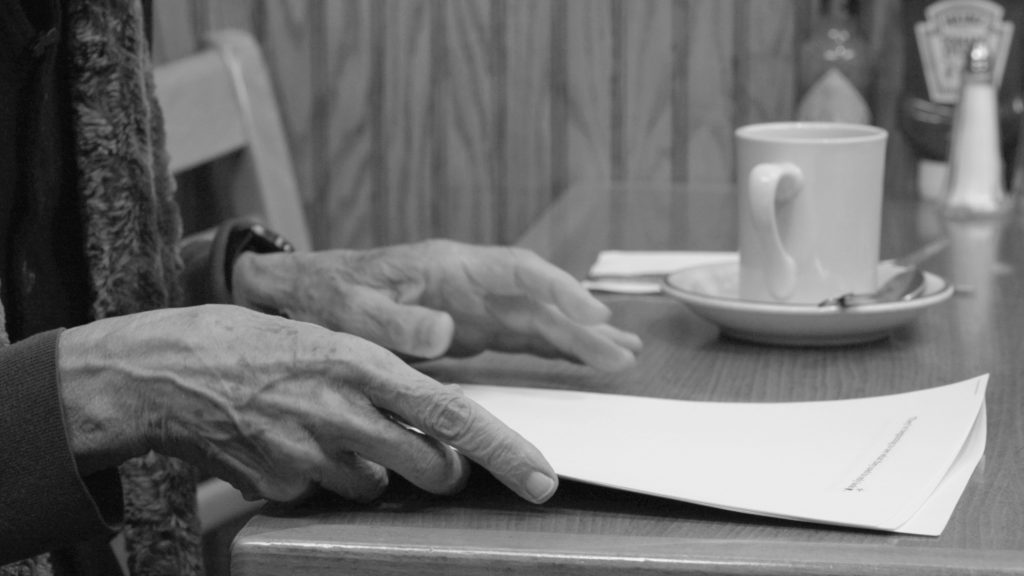
Adam Pendleton, Just Back from Los Angeles: A Portrait of Yvonne Rainer, 2016–17.
Single-channel black-and-white video with sound, 13:51 min.
Dimensions variable. Courtesy the artist.
Contact improvisation is an apt metaphor for two people feeling each other out during a first meeting. Pendleton, who is 50 years younger than the legendary artist, includes in the video a slightly awkward moment where he points out their age difference and the fact that they barely know each other. A complex dance then unfolds as each takes the lead at different times to steer the conversation or action. Perhaps the most forceful directive is when Pendleton has Rainer read aloud a text that collages together descriptions of police shootings of black men by Keeanga-Yahmahtta Taylor, quotes from Black leaders like Malcolm X and Stokely Carmichael, lines from Ron Silliman’s poetry, and snippets from a 1969 letter written to Rainer by her friend Barbara Dilley about performing one of her pieces. Rainer's voice begins to crack as she emotionally finishes reading the text.
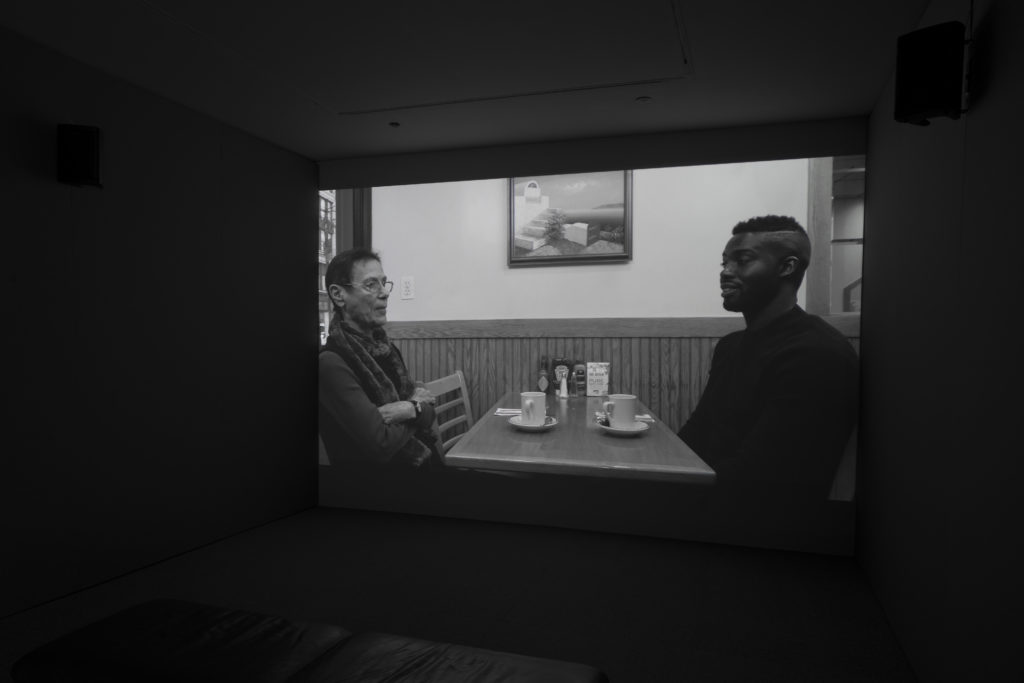
Adam Pendleton, Just Back from Los Angeles: A Portrait of Yvonne Rainer, 2016–17. Single-channel black-and-white video with sound, 13:51 min. Courtesy the artist. Installation view List Projects: Adam Pendleton at MIT List Visual Arts Center Photo: Peter Harris Studio
During the reading, pieces of Rainer’s performance Trio A are overlaid, and Pendleton also sets the iconic footage to a gospel song I Am Saved. A provocative question is posed and left unanswered for us to ponder: what does police brutality or the black lives matter movement have to do with Rainer’s postmodern dance? Put more generally, what’s the relationship between poetry and politics? Abstraction and activism? In a conversation with Pendleton, Rainer says her work in the Sixties was “split between aesthetic rebellions or dialogues, and my activism around the Vietnam War,” a reason she moved into filmmaking to have more “latitude” to deal with socio-political content. Pendleton calls the pairing a “radical juxtaposition,” and sees abstraction as having the virtue of “something ethical about being illegible, about the human project not being something that is readily reduced to ‘he’s a that’ and ‘she’s a this.’” The strength of Pendleton’s video though is not just the ambiguity and juxtaposition, which is powerful, but the heartfelt attempt at a connection. It could have completely failed. If an initial meeting is a first dance, he and Rainer could have stepped all over each other’s feet. Rainer’s hug and kiss at the end seem to suggest otherwise though as two artists share something between one another that is not completely shared with us but crystallized to feel the weight of the exchange.
Just Back from Los Angeles: A Portrait of Yvonne Rainer (2016–17) is on view in LIST PROJECTS: ADAM PENDLETON at MIT List Visual Arts Center until February 11, 2018.
Yvonne Rainer will be in conversation with Renée Green at the Carpenter Center for the Visual Arts In conjunction with Renée Green: Within Living Memory on Thursday, April 12th at 6 pm.

